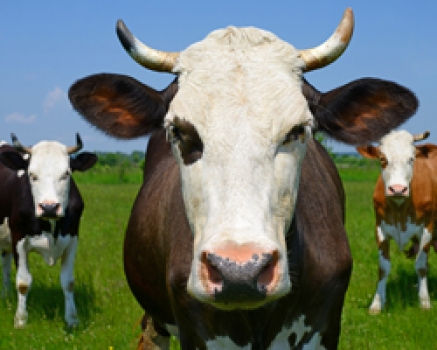
The field of veterinary diagnostics covers a vast multitude of tests, designed to assess whether an animal is suffering from a particular disease or condition, to evaluate a response to treatment, or which can even be used to determine the cause of death. Sample types are many and varied, and include whole blood, plasma, serum, urine, faeces, sputum and spinal fluid, as well as tissue samples from organs or tumours. With such a diversity of established tests, as well as the continuous development of new methods, it would be impossible to discuss every eventuality yet popular techniques include the following:
Immunocytochemistry
This is the microscopical study of cells, and relies on the use of primary antibodies specific to the target of interest, and fluorophore- or enzyme-labelled secondary antibodies to allow the extent of antibody binding to be measured. In terms of veterinary diagnostics, immunocytochemistry might be used to assess cellular abnormalities such as irregular levels of protein expression, increased apoptosis, or unusual counts of specific types of immune cell.
Immunohistochemistry (IHC)
IHC is the process of using antibodies to detect the presence of a specific target antigen in a tissue sample, and again relies on the use of antigen-specific primary antibodies paired with labelled secondary antibodies for visualisation. Tissue samples may be formalin-fixed paraffin-embedded (FFPE) or frozen, and it is common practice to check which sample type an antibody has been evaluated against; successful use of an antibody with FFPE tissue does not guarantee success with frozen samples, and vice versa. When considering veterinary diagnostics, IHC may be used to identify the presence of tumour markers or to recognise proteins that are foreign to the host, such as those which are associated with an infectious agent.
ELISA
ELISA is an extremely popular assay format for the detection of target antigens in a sample. While the technique was originally dependent on an enzyme-labelled antibody for detection other labels have since been employed, and the term ELISA now describes any assay in which a molecule has been adsorbed on to a solid surface such as the wells of a microplate. The two most commonly used ELISA formats are a sandwich ELISA and a competitive assay, both of which are dependent on the use of high quality antibody reagents. While it is possible to develop an ELISA in-house, it can often be simpler to buy an off-the-shelf kit, and an extensive selection is available. In veterinary diagnostics an ELISA might be used to test for the presence of tumour markers, infectious disease agents or cardiac markers.
Lateral flow immunoassay
Lateral flow is an extremely popular method for rapid, visual assessment of the presence of an antigen in a test sample. In a typical lateral flow assay, the sample is applied to one end of a test strip, from which it flows to a conjugate release pad where the detection reagent is held. The detection reagent is often an antibody which has been conjugated to a coloured detection particle such as gold or latex. A capture reagent further along the strip is used to bind the antigen-detection reagent complex, giving rise to a visible line to indicate a positive result. Lateral flow is ideally suited to point-of-care testing, and with the use of good quality reagents affords high sensitivity and specificity. Veterinary diagnostic applications include testing hormone levels, checking for the incidence of serum proteins or evaluating the presence of drugs.
BIOZOL offers an extensive range of veterinary diagnostic reagents, including antibodies, blocking peptides, proteins, cell culture reagents, biochemicals, assay kits including ELISA, and more. These can easily be searched on the basis of species reactivity, application, clonality, host species, isotype and manufacturer using the selectable filters.



